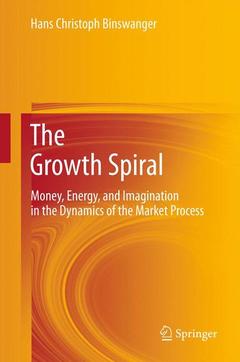Description
The Growth Spiral, 2013
Money, Energy, and Imagination in the Dynamics of the Market Process
Author: Binswanger Hans Christoph
Language: German
Subject for The Growth Spiral:
Approximative price 52.74 €
In Print (Delivery period: 15 days).
Add to cartPublication date: 01-2015
Support: Print on demand
Approximative price 52.74 €
In Print (Delivery period: 15 days).
Add to cartPublication date: 12-2012
168 p. · 15.5x23.5 cm · Paperback
Description
/li>Contents
/li>Biography
/li>Comment
/li>
Hans-Christoph Binswanger is a Professor Emeritus of economics at the University of St. Gallen, Switzerland, where he was also Head of the Institute of Economics and Director of the Institute for Economy and the Environment. He holds a phd and a habilitation from University of Zurich, Switzerland. He has published extensively in books and journals on environmental and resource economics as well as monetary economics, and has been awarded several research and policy prizes.
Proposes a new approach to understanding the modern economy
Presents a model of economic growth incorporating the roles of monetary dynamics and natural resources
Written for the specialist and the interested lay reader
Includes supplementary material: sn.pub/extras



